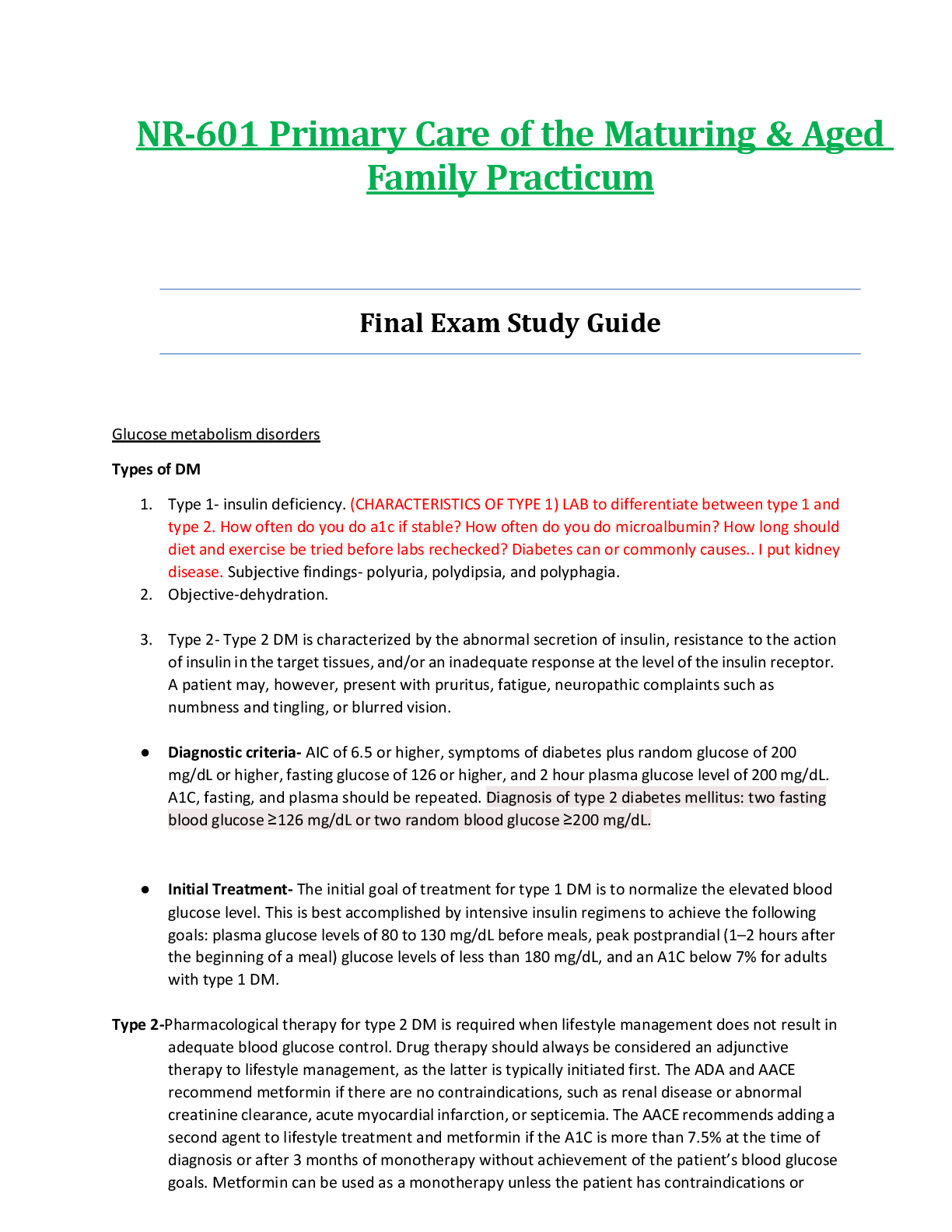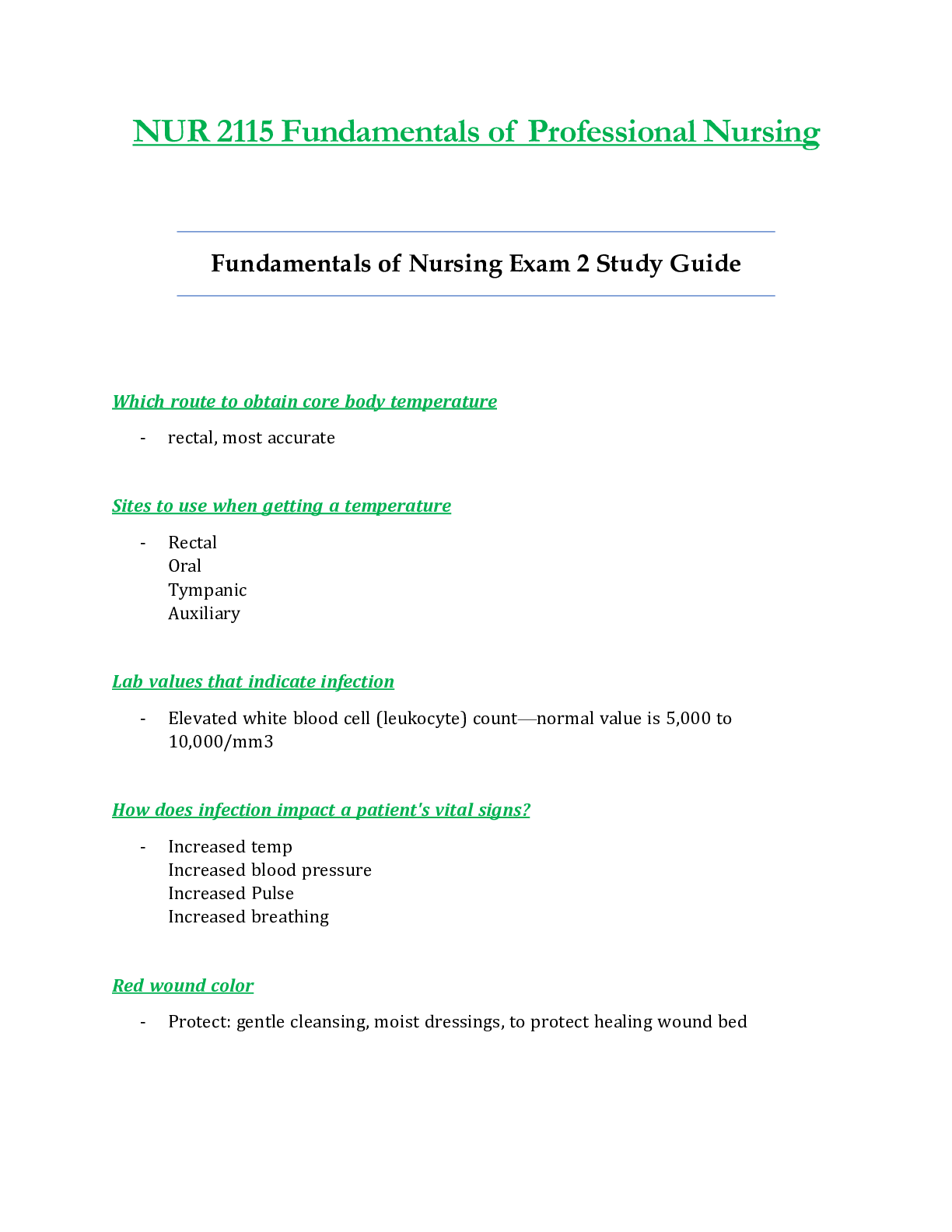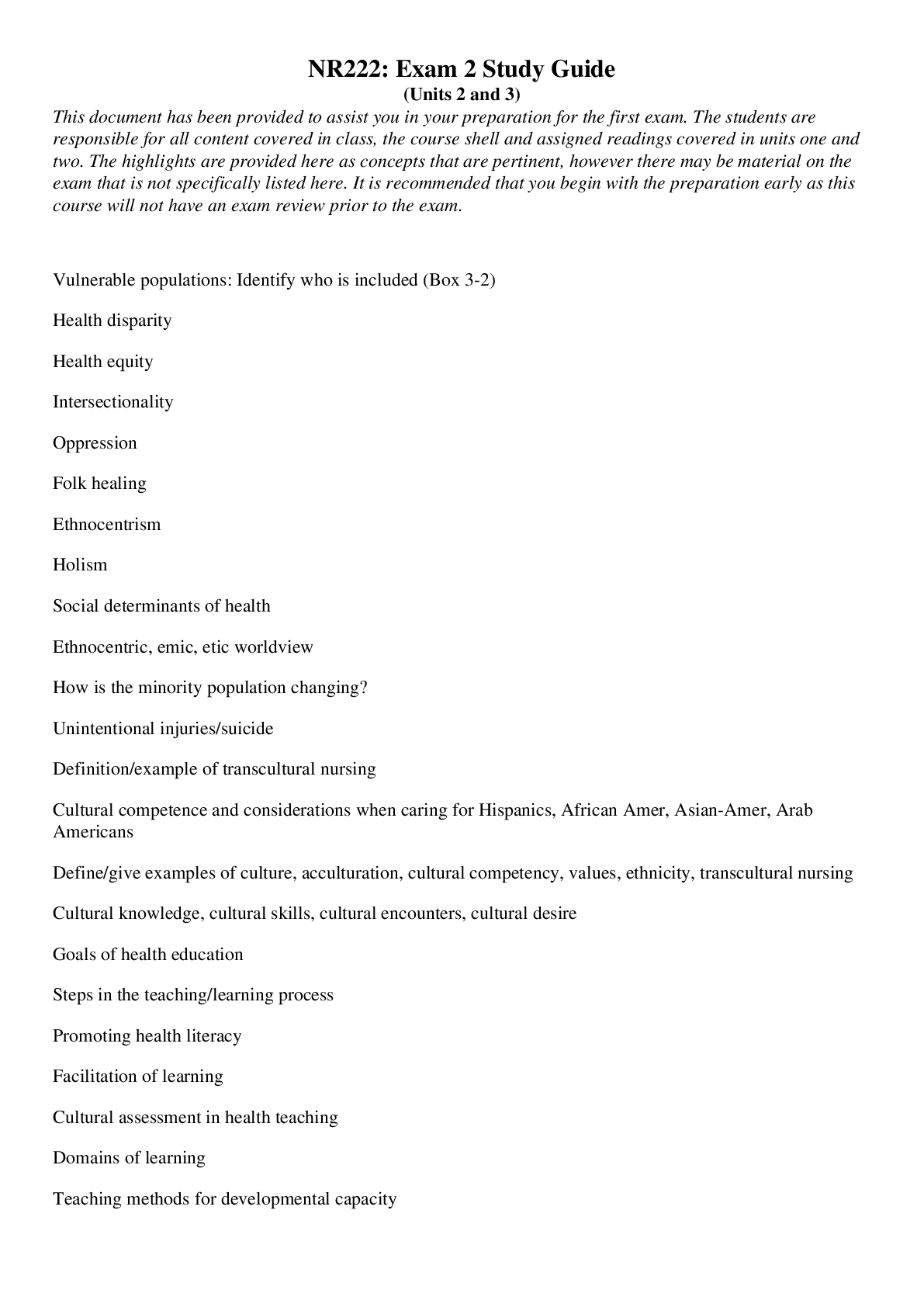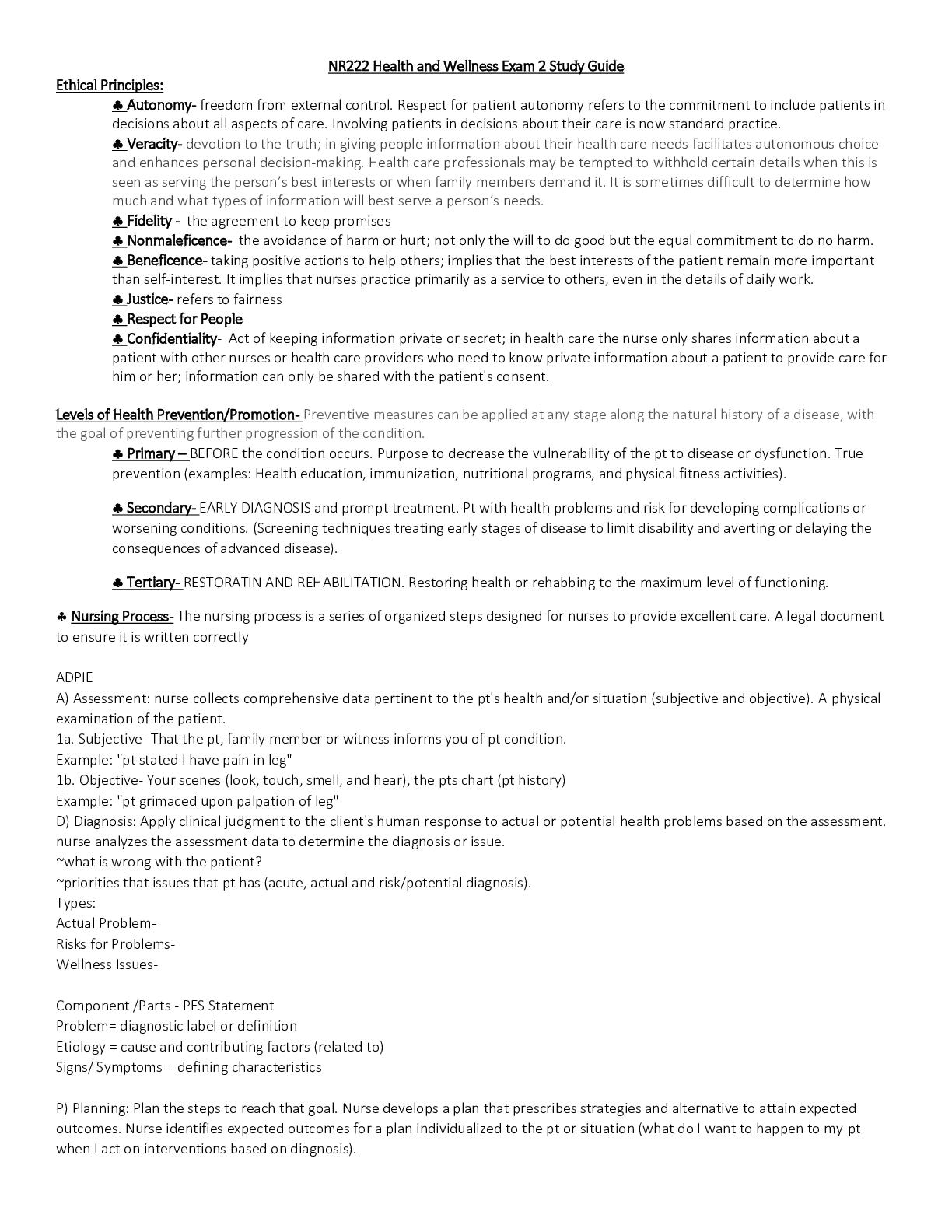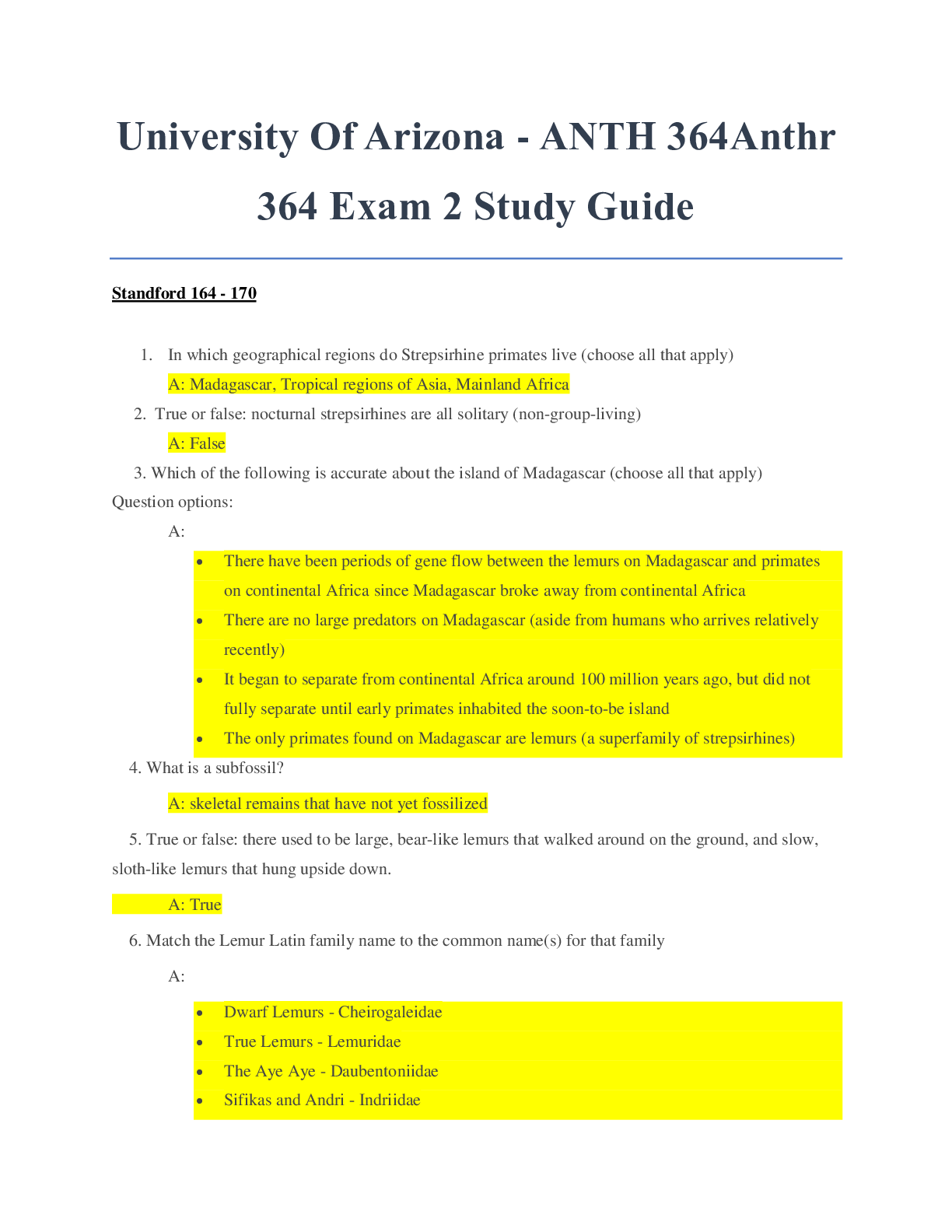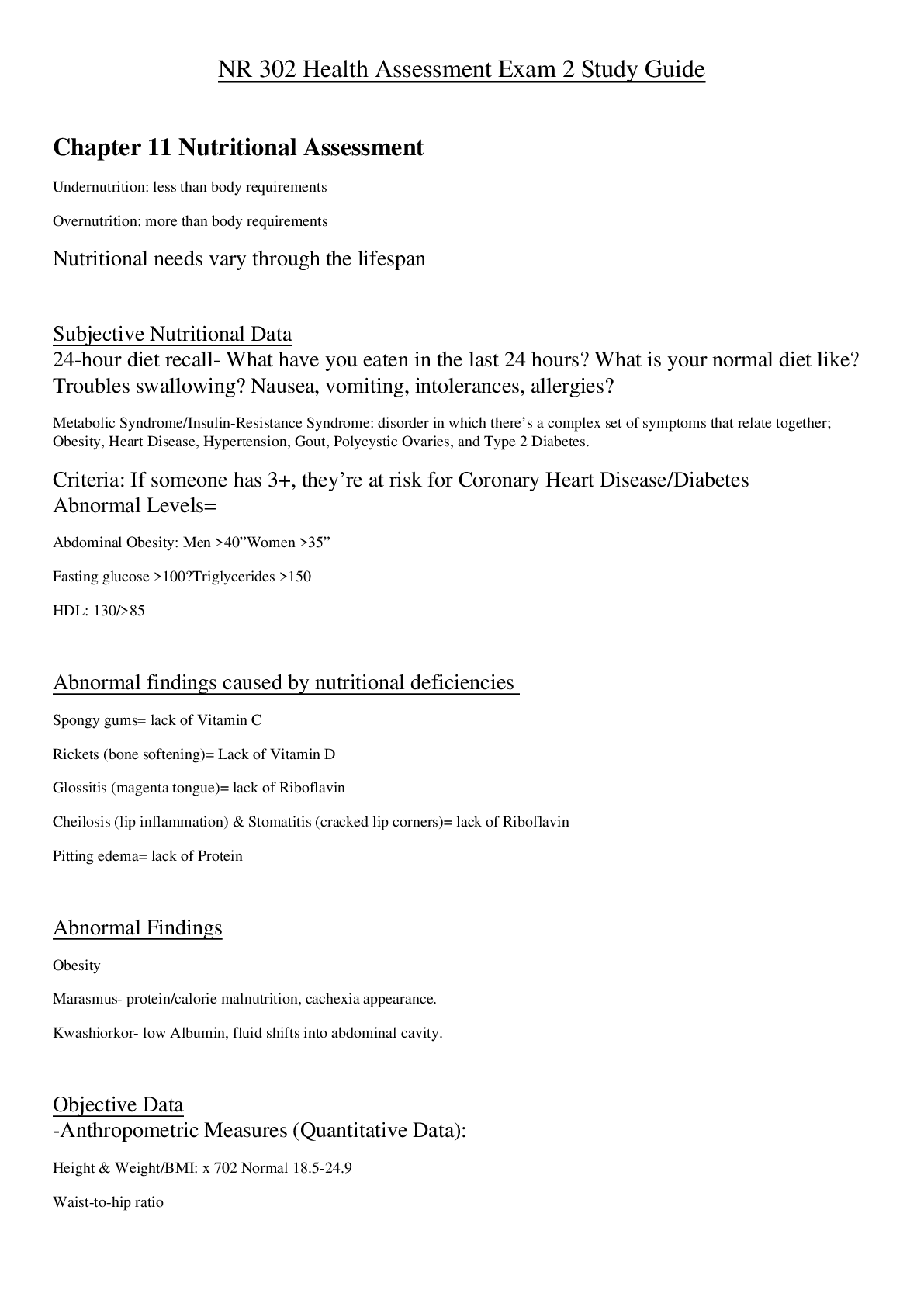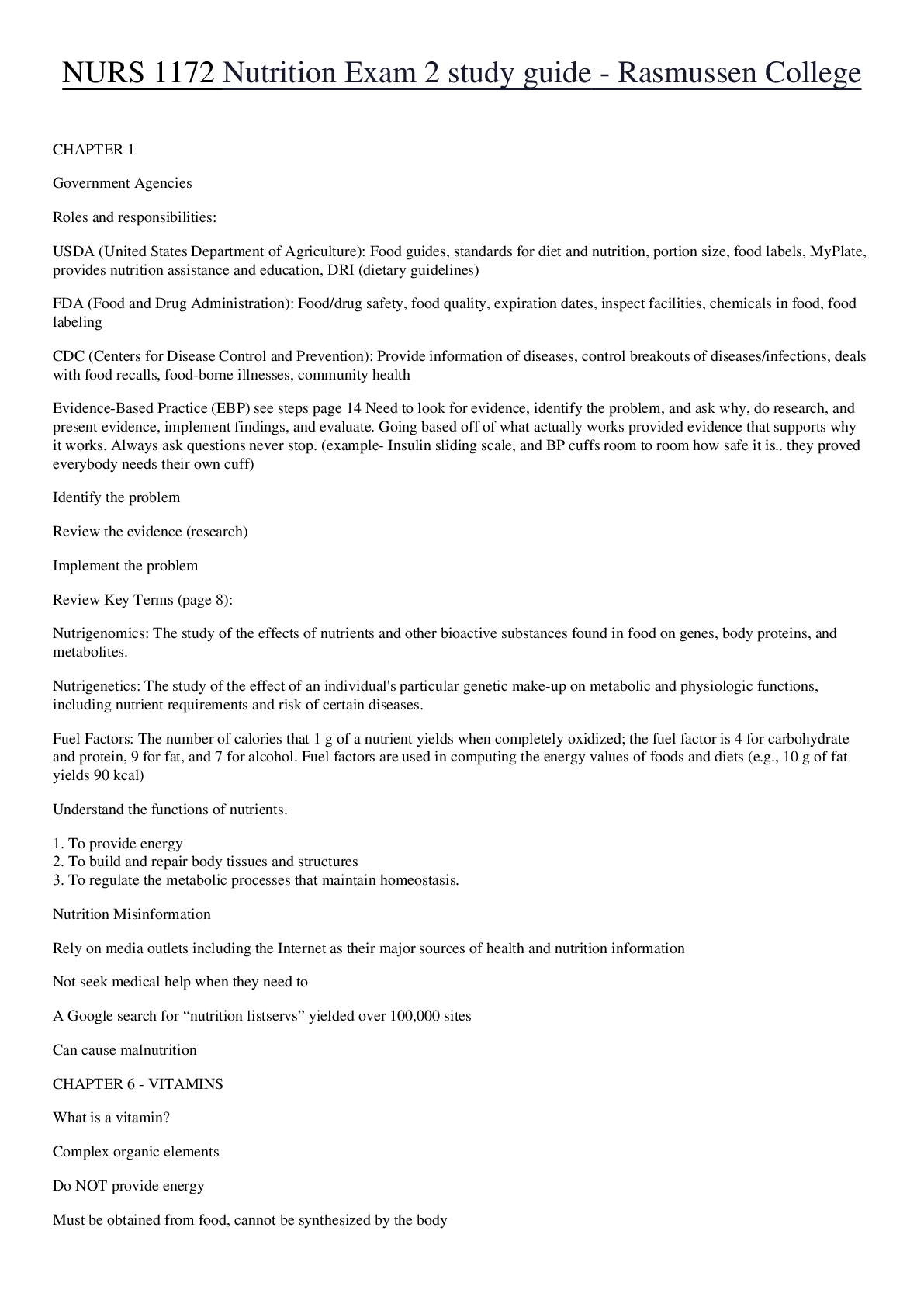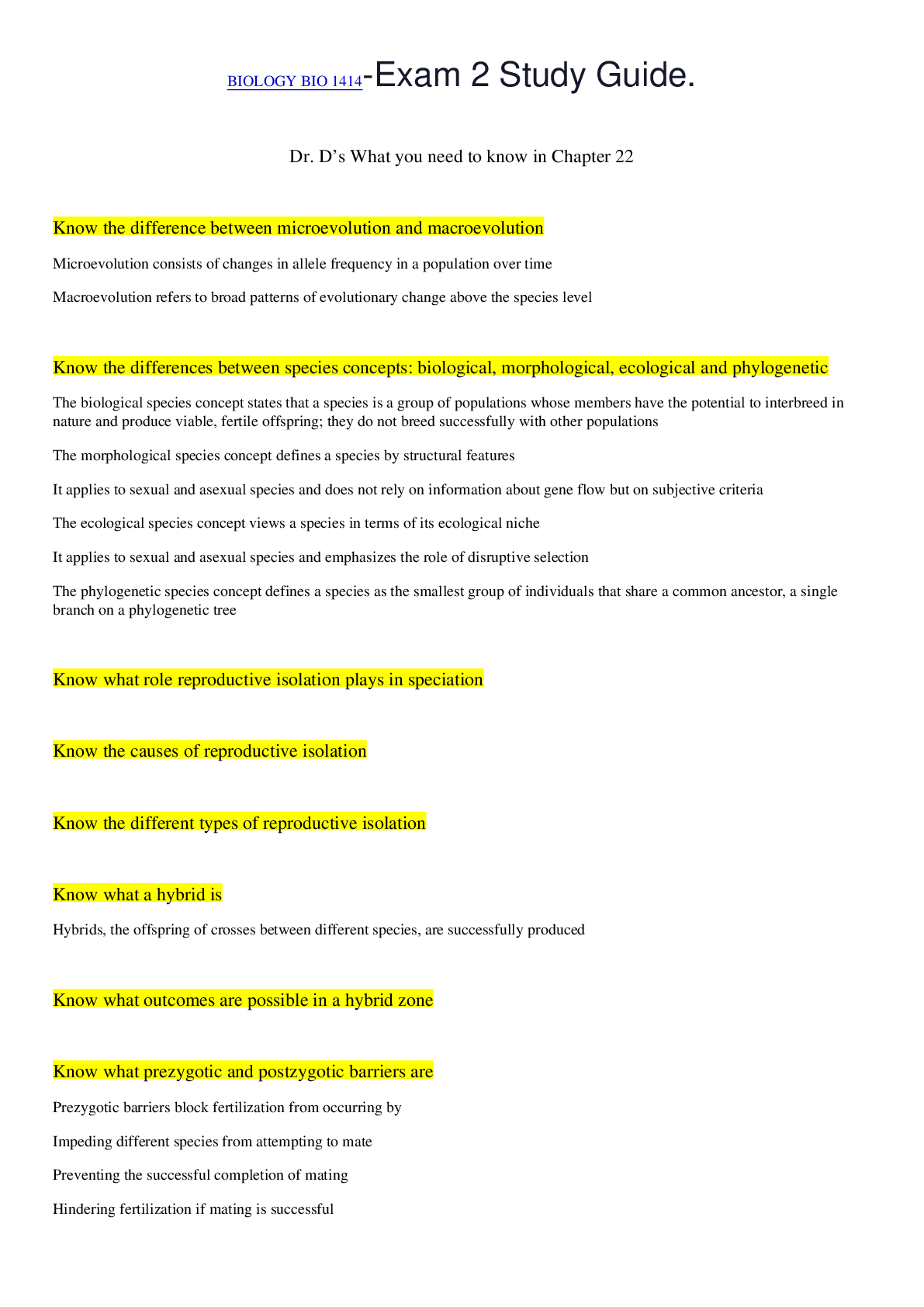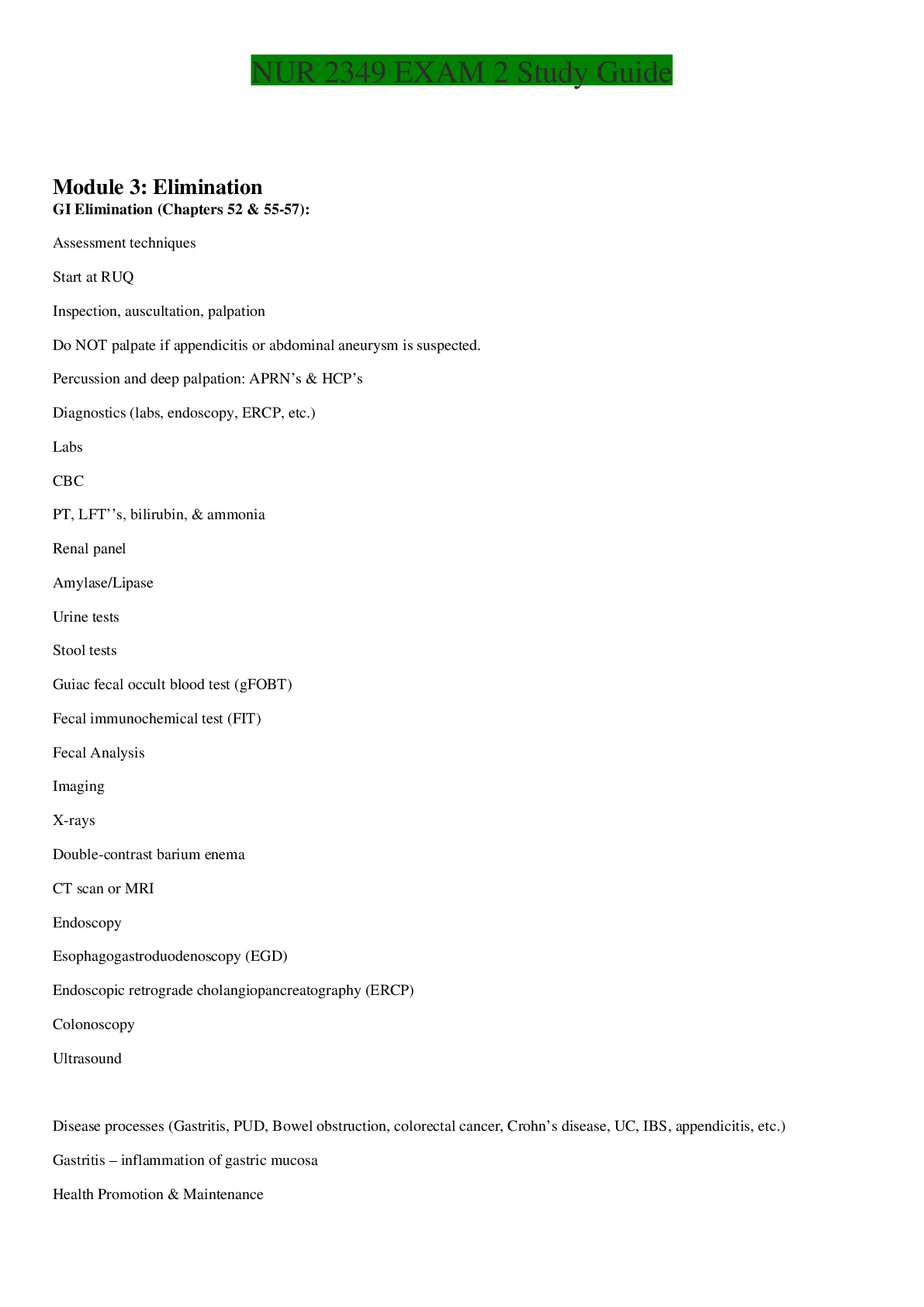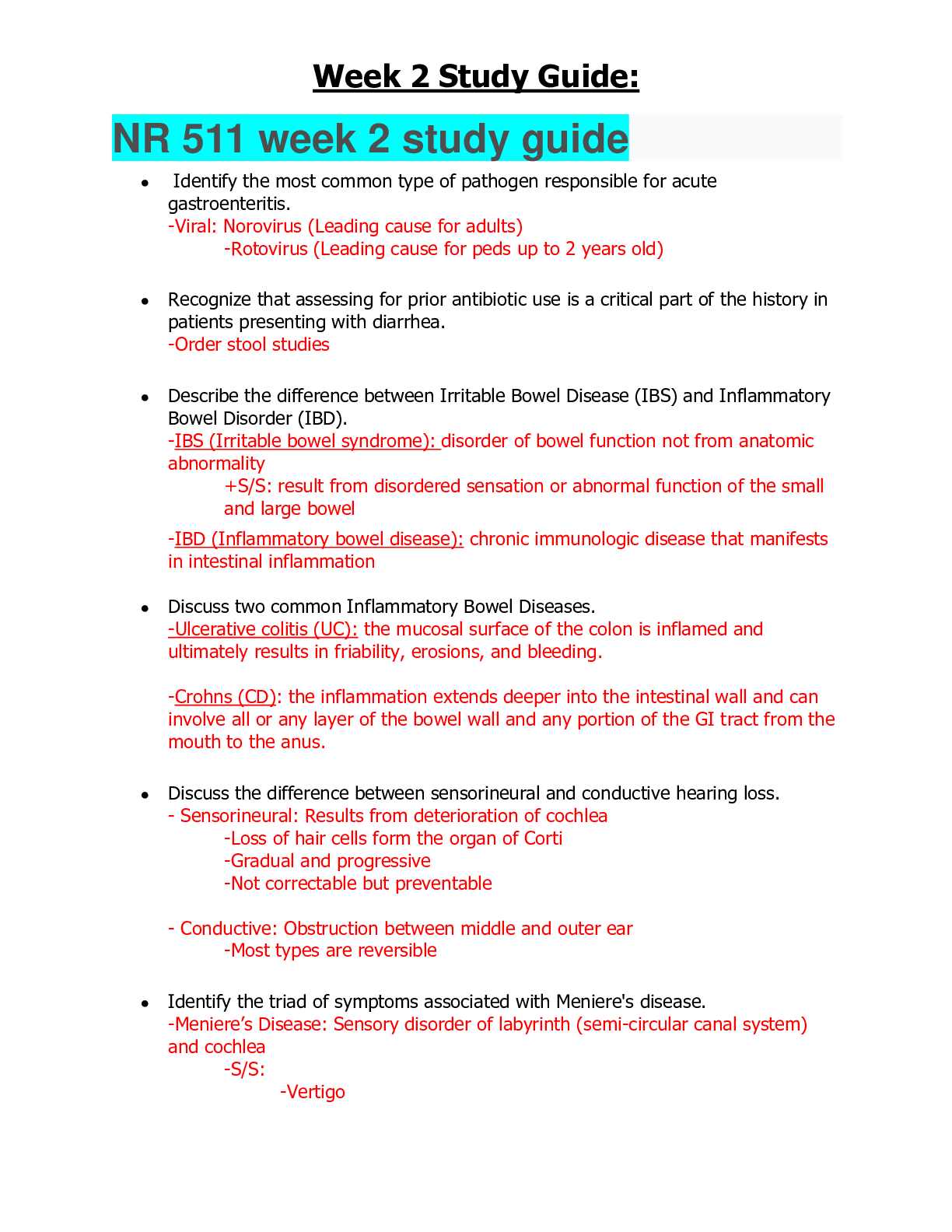*NURSING > STUDY GUIDE > NR224 / NR 224 Exam 2 Study Guide (Latest Update) Fundamentals - Chamberlain (All)
NR224 / NR 224 Exam 2 Study Guide (Latest Update) Fundamentals - Chamberlain
Document Content and Description Below
NR224 Fundamentals Exam 2 Study Guide & Key Words Why would someone have urinary retention? - Urinary retention is the inability to partially or completely empty the bladder. Acute or rapid-onset ... urinary retention stretches the bladder, causing feelings of pressure, discomfort/pain, tenderness over the symphysis pubis, restlessness, and sometimes diaphoresis. Patients may have no urine output over several hours and in some cases experience frequency, urgency, small-volume voiding, or incontinence of small volumes of urine. Chronic urinary retention has a slow, gradual onset during which patients may experience a decrease in voiding volumes, straining to void, frequency, urgency, incontinence, and sensations of incomplete emptying. postvoid residual (PVR) - urine that remains in the bladder after the act of micturition; a synonym for residual urine Pelvic floor muscle training - Evidence has shown that patients with urgency, stress, and mixed UI experience improvement and can eventually achieve continence when treated with pelvic floor muscle training (Lukacz et al., 2017; Bykoviene et al., 2018). Pelvic floor muscle training involves teaching patients how to identify and contract the pelvic floor muscles in a structured exercise program. This exercise program is commonly called Kegel exercises and is based on therapy first developed by obstetrician gynecologist Dr. Arnold Kegel in the 1940s. The exercises work by increasing the pressure within the urethra by strengthening the pelvic floor muscles and inhibiting unwanted bladder contractions (Fig. 46.16). Many patients benefit from verbal instructions on how to do the exercises (see Box 46.8). Patients who have difficulty correctly identifying and contracting the pelvic floor muscles can be sent to a continence specialist for biofeedback. Biofeedback involves intensive instruction augmented by computerized measurement of muscle activity that is displayed on a monitor. The visual feedback helps the patient learn to contract the muscles correctly. [Show More]
Last updated: 2 years ago
Preview 1 out of 31 pages

Buy this document to get the full access instantly
Instant Download Access after purchase
Buy NowInstant download
We Accept:

Reviews( 0 )
$10.00
Can't find what you want? Try our AI powered Search
Document information
Connected school, study & course
About the document
Uploaded On
Apr 06, 2021
Number of pages
31
Written in
Additional information
This document has been written for:
Uploaded
Apr 06, 2021
Downloads
0
Views
66


